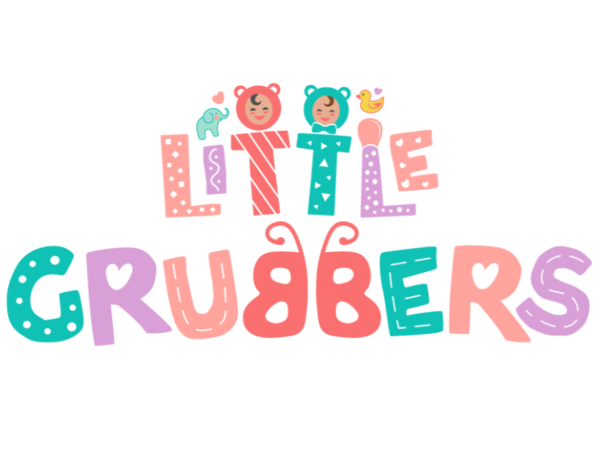Why Mindful Eating Matters for Kids
Picture this: You’re rushing through dinner, scrolling on your phone, while your little one picks at their food distractedly. Sound familiar? In today’s fast-paced world, mindful eating for kids can feel like a challenge.
But here’s the good news: teaching children to eat mindfully from an early age helps them build a lifelong positive relationship with food. It’s about listening to hunger cues, appreciating food, and making mealtimes a peaceful, enjoyable experience.
The best part? Babies are naturally mindful eaters! They eat when they’re hungry and stop when they’re full. Our job as parents is to support that instinct and create an environment that encourages it.
Ready to make mindful eating a part of your child’s life? Let’s dive into some simple, actionable strategies!
1. What Is Mindful Eating for Kids?
Mindful eating means being fully present during meals, paying attention to flavors, textures, and hunger cues, and eating at a slow, comfortable pace.
For kids, this means:
✔️ Eating without distractions (no screens or toys at the table)
✔️ Tuning into their hunger and fullness cues
✔️ Exploring different textures and flavors
✔️ Enjoying mealtime as a positive experience
Encouraging these habits early on can prevent overeating, picky eating, and mealtime battles later in life.
2. Tips for Encouraging Mindful Eating from an Early Age
1️⃣ Create a Calm & Distraction-Free Mealtime Environment
Babies and toddlers learn through observation. If they see family members rushing meals or eating in front of the TV, they’ll follow suit.
✅ Turn off screens and keep toys away from the table
✅ Sit together as a family whenever possible
✅ Encourage conversation about the food—talk about its color, texture, and taste
Example: Instead of saying, "Just eat your carrots," try, "Wow, these carrots are so crunchy! Do you hear the sound when you bite them?"
2️⃣ Let Your Child Listen to Their Hunger & Fullness Cues
One of the biggest mistakes we make as parents is pushing kids to eat when they’re not hungry.
🚫 Avoid phrases like "Just one more bite" or "Finish your plate."
✅ Instead, ask: "Is your tummy still hungry, or is it full?"
Babies naturally stop eating when they’re full. Trust their instincts!
3️⃣ Encourage Self-Feeding
When babies feed themselves, they learn to pace their eating and explore textures more naturally.
✔️ Offer finger foods or soft foods they can scoop
✔️ Use baby-friendly utensils like the Little Grubbers 3-in-1 Baby Spoon™, designed for tiny hands
✔️ Let them make a mess—it’s part of the learning process!

4️⃣ Make Mealtime a Sensory Experience
Mindful eating isn’t just about food—it’s about using all the senses!
👀 Look at the colors of the food
👂 Listen to the sounds (crunchy, soft, squishy)
🤲 Feel different textures with hands or baby utensils
👃 Smell the food before taking a bite
👅 Describe the flavors—sweet, salty, tangy
This makes food more exciting and helps picky eaters feel more comfortable trying new things!
5️⃣ Slow Down the Eating Pace
Ever noticed how fast toddlers shove food into their mouths? Encourage them to slow down and enjoy the meal.
💡 Fun Tip: Use a baby-friendly spoon with a grip to help slow the pace (like the Little Grubbers 3-in-1 Baby Spoon™!)
Other ways to slow down eating:
✔️ Model slow eating—take small bites and chew thoroughly
✔️ Use a smaller spoon to encourage smaller bites
✔️ Put the spoon down between bites
6️⃣ Offer a Variety of Foods Without Pressure
Avoid forcing or bribing kids to eat. Instead, create a stress-free environment where they feel safe exploring new foods.
✔️ Introduce one new food at a time alongside familiar favorites
✔️ Use fun presentations—try food cut into shapes, colorful plates, or “snack boards” with different textures
✔️ Let them touch and play with food—this helps normalize new flavors
🚫 Don’t say: "If you eat your broccoli, you’ll get dessert."
✅ Try instead: "This broccoli is really green! What does it taste like to you?"
The goal is to build curiosity about food, not fear or pressure!
7️⃣ Involve Kids in Food Prep
Kids are more likely to eat and enjoy food when they help make it!
Fun ways to involve them:
✔️ Let them stir or mash soft foods
✔️ Have them pick out fruits & veggies at the store
✔️ Let them “plate” their own meal (even toddlers love this!)
This makes eating feel like an adventure, not a chore!
3. The Benefits of Mindful Eating for Kids
By encouraging mindful eating, you’re setting the stage for:
✔️ Healthier eating habits and a better relationship with food
✔️ Less picky eating and more willingness to try new foods
✔️ Improved digestion from slower eating
✔️ Stronger family connections through shared mealtimes
The earlier you start, the more natural it will feel for your child!
Final Thoughts: Small Steps Lead to Lifelong Habits
Mindful eating isn’t about perfection—it’s about creating a positive food experience for your child. Start small, be patient, and remember:
The goal isn’t just to feed your child—it’s to help them develop a lifelong love of food.
💡 Looking for baby-friendly utensils to support mindful eating? The Little Grubbers 3-in-1 Baby Spoon™ is designed to make self-feeding easier and more enjoyable!
What’s Your Favorite Mealtime Ritual?
We’d love to hear from you! How do you encourage mindful eating with your little one? Drop a comment below! 😊🍽️✨

